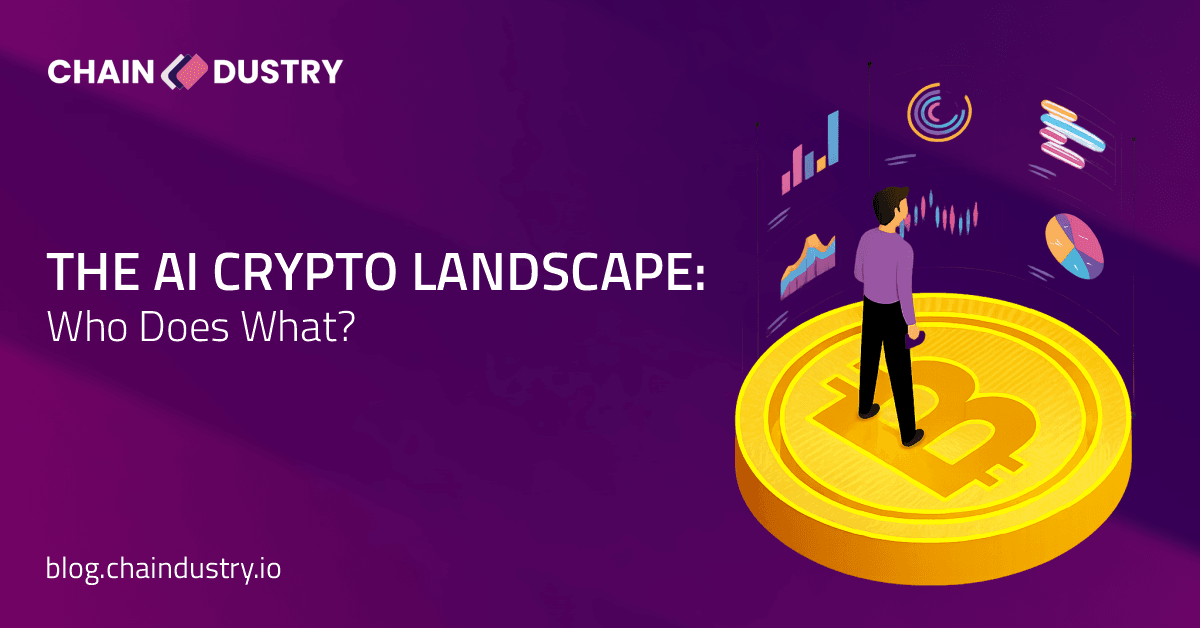Introduction
Artificial Intelligence is the hottest narrative in crypto right now. In 2023, it was “metaverse.” In 2024, it was “real-world assets.” And in 2025, AI coins are everywhere. But here’s the problem: not every token with “AI” in its name is actually doing anything with artificial intelligence.
So how do you separate the hype from the real builders? Let’s break down the AI crypto industry and see which projects are shaping the future and which are just riding the wave.
Why AI and Crypto Make Sense Together
At first, AI and blockchain may seem like strange partners. But they complement each other:
1. AI needs data → Blockchains help manage ownership, access, and rewards for data contributors.
2. AI needs compute power → Decentralized GPU networks make training more affordable and distributed.
3. AI decisions need trust → On-chain governance makes AI systems auditable instead of black-boxed.
That’s why AI + crypto is one of the most compelling use cases in Web3.
The Big Buckets of AI Crypto Projects
Not all AI coins are created equal. They generally fall into a few categories:
1. Data Marketplaces – Projects like Ocean Protocol and SingularityNET let users tokenize, share, and monetize datasets for AI training.
2. Compute Networks – Render (RNDR) and Akash (AKT) provide decentralized GPU power for AI workloads.
3. AI Applications – Some projects build actual AI tools (like bots, agents, or analytics) and power them with tokens.
4. AI Infrastructure & Governance – Protocols focused on transparent model training, auditing, and community-driven control.
The AI Crypto Landscape – Who Does What?

When people say “AI coins” they often lump them together but the reality is that the ecosystem is layered, with each category solving a different piece of the puzzle. Think of it as a stack where each layer builds on the one below it:
1. The Data Layer (Feeding the Machines)
AI is only as good as the data it’s trained on. But high-quality data is expensive and often controlled by a few corporations.
Ocean Protocol (OCEAN) creates marketplaces where individuals and businesses can share and monetize data securely.
SingularityNET (AGIX) lets developers list AI models and datasets in a decentralized marketplace.
This layer ensures AI development is more open and not monopolized by Big Tech.
2. The Compute Layer (Powering the Models)
Training AI models requires massive GPU power, and centralized cloud providers like AWS dominate the market. AI-focused crypto projects are decentralizing this resource.
Render (RNDR) provides distributed GPU rendering and compute for both AI and visual effects.
Akash (AKT) is a decentralized cloud network where anyone can lease unused compute.
Gensyn focuses specifically on decentralized AI training compute, aiming to rival centralized providers.
These projects lower costs, increase accessibility, and prevent single points of failure.
3. The Application Layer (AI in Action)
This is where AI tools meet real-world use cases. Instead of just infrastructure, these tokens power actual products.
Fetch.ai (FET) is building autonomous AI agents that can perform tasks like supply chain optimization or decentralized trading.
Numerai (NMR) is a hedge fund powered by thousands of data scientists submitting AI models, all incentivized by the NMR token.
These apps show how AI can be integrated directly into finance, logistics, and consumer tools.
4. The Governance Layer Keeps AI Accountable
One of the biggest concerns around AI is trust like who controls it, and how decisions are made. Crypto’s governance tools offer transparency here.
DAOs (Decentralized Autonomous Organizations) is used to oversee how AI models are trained, how rewards are distributed, and how ethical guidelines are enforced.
This layer is less flashy but critical. Without governance, AI risks becoming another opaque, centralized system.
How to filter Risks and Red Flags
Not every AI coin is worth your portfolio slot. Some are pure buzz: tokens with vague “AI” branding but no real tech. Here’s how to filter:
1. Check the whitepaper – Does it describe an actual AI use case or just say “AI” everywhere?
2. Look for adoption – Is anyone using the platform, or is it just speculation?
3. Examine tokenomics – Does the token actually power the network, or is it a fundraising gimmick?
Why This Matters for Investors
AI will be one of the defining technologies of the next decade. Crypto-native versions of AI systems could ensure that value and control aren’t locked up in Silicon Valley. For early adopters, that means opportunity but also higher risk.
Investing in AI coins today is a bet on whether decentralized systems can compete with Big Tech. Some projects will thrive, others will vanish. The key is knowing which category you’re betting on.
Conclusion
AI coins aren’t just a passing trend. The best ones are tackling real problems (like data ownership, compute shortages, and algorithmic trust) that centralized players can’t solve alone.
As with any frontier in crypto, the winners won’t be the noisiest tokens but the projects actually building the future. Do your research, diversify, and remember: in AI and crypto, utility always outlasts hype.
